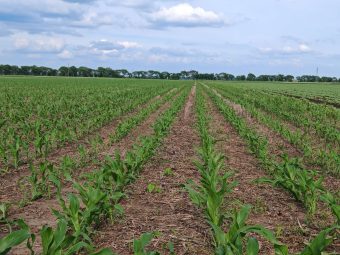Agriculture is the largest global employer and the only sector whose products we all use every day, multiple times. It still primarily takes place on land, which is the source of as much as 95 percent of the food we consume. However, today land is much more than the basis of nutrition – it is a non-renewable resource, the habitat of two-thirds of living beings, an essential link in the carbon cycle, the infrastructure of future cities, and a strategic ally in the fight against climate change.

In a time of increasing pressure on natural resources, it is high time that soil regains the place it deserves – at the heart of policies, investments, and our attention.
Soil Connects all Sectors
Agriculture plays a key role in food supply and biodiversity preservation, but at the same time, it contributes to greenhouse gas emissions. It is often cited that the agriculture, forestry, and other land use sector, known as the AFOLU sector, accounts for 13–21 percent of total anthropogenic greenhouse gas emissions. Less well known is that a significant portion of those emissions comes from land-use changes, including deforestation, which alone contributes around 11 percent.
Soil is no longer solely an agricultural issue – it is a strategic resource that links all sectors of development. Energy, construction, tourism, mining, and the management of protected natural areas – all rely at their core on the spatial capacity provided by land. Its value increases in proportion to the pressure exerted by society, as every sector demands more and more land, in ever larger areas.
Unlike air, rivers, or oceans, land can be owned and traded. This possibility of alienation makes soil a deep social and political issue, where fairness, sustainability, and long-term planning must be prioritized.
IN FOCUS:
- How ABB Technology Redefines Industrial Energy Efficiency
- Climate Vulnerability in Bosnia and Herzegovina – What Awaits Urban Areas
- The July Wildfire Wave In Serbia – An Alarm We Must Not Ignore
Healthy Soil – a Vital Link in the Carbon Cycle
The carbon cycle enables life on Earth and the functioning of life processes. Plants absorb carbon dioxide from the atmosphere during photosynthesis, and carbon is stored in their tissues. When organisms die, the carbon returns to the soil or atmosphere through decomposition. Although carbon sequestration is a slow process, it is possible – hence the slogan: “Put carbon back where it belongs – in the soil.”

Soil down to a depth of one meter contains more carbon than aboveground vegetation and the atmosphere combined. However, over half of the world’s agricultural land is already degraded in some way, mostly due to the loss of organic matter – humus – caused by intensive farming. Paradoxically, this leads to such degraded soils releasing even more carbon dioxide instead of storing it, which can cancel out all our other savings in the energy sector. Furthermore, degraded soils are especially vulnerable to climate change and extreme weather events, jeopardizing stable food production.
Organic matter (humus) has always been an indicator of soil fertility. Due to intensive production, declining livestock numbers, burning of crop residues, loss of crop rotation, and erosion, most soils in our country are showing a downward trend in humus content. Fewer and fewer producers can claim their soils contain more than three percent humus – the minimum threshold for successful and climate-resilient production.
Carbon sequestration in soil is primarily a microbiological process, and favorable conditions are needed to activate it. Agronomic practices of regenerative agriculture specifically aim to improve these conditions and stimulate the resynthesis of organic matter. In analyses of greenhouse gas emission reduction potential in the food industry, the greatest impact is achieved precisely through improving soil. That is why more and more large agricultural systems are adopting regenerative agriculture as part of their ESG goals.
Jordana Ninkov, PhD
The story was published in Energy portal Magazine CLIMATE CHANGE

